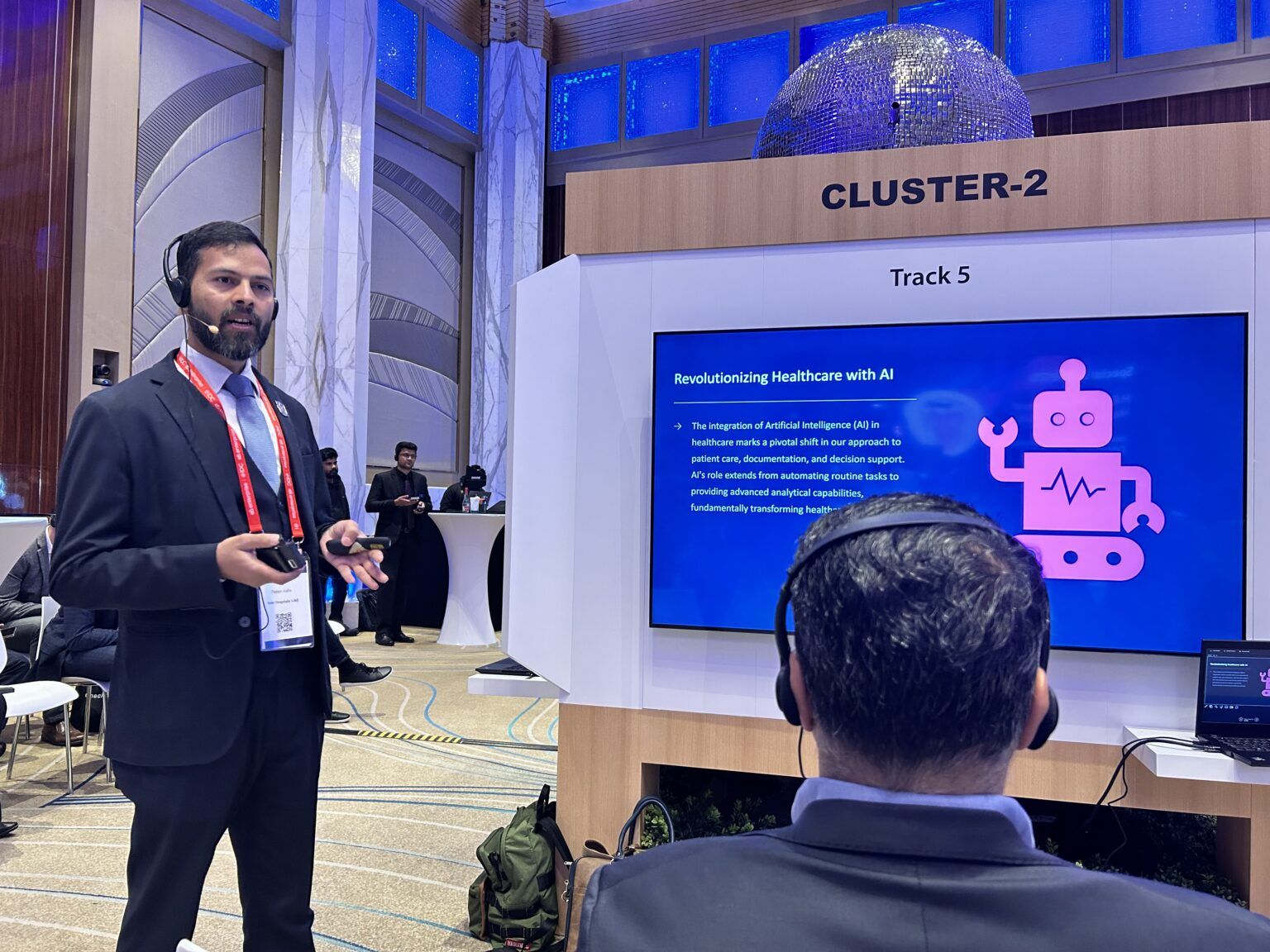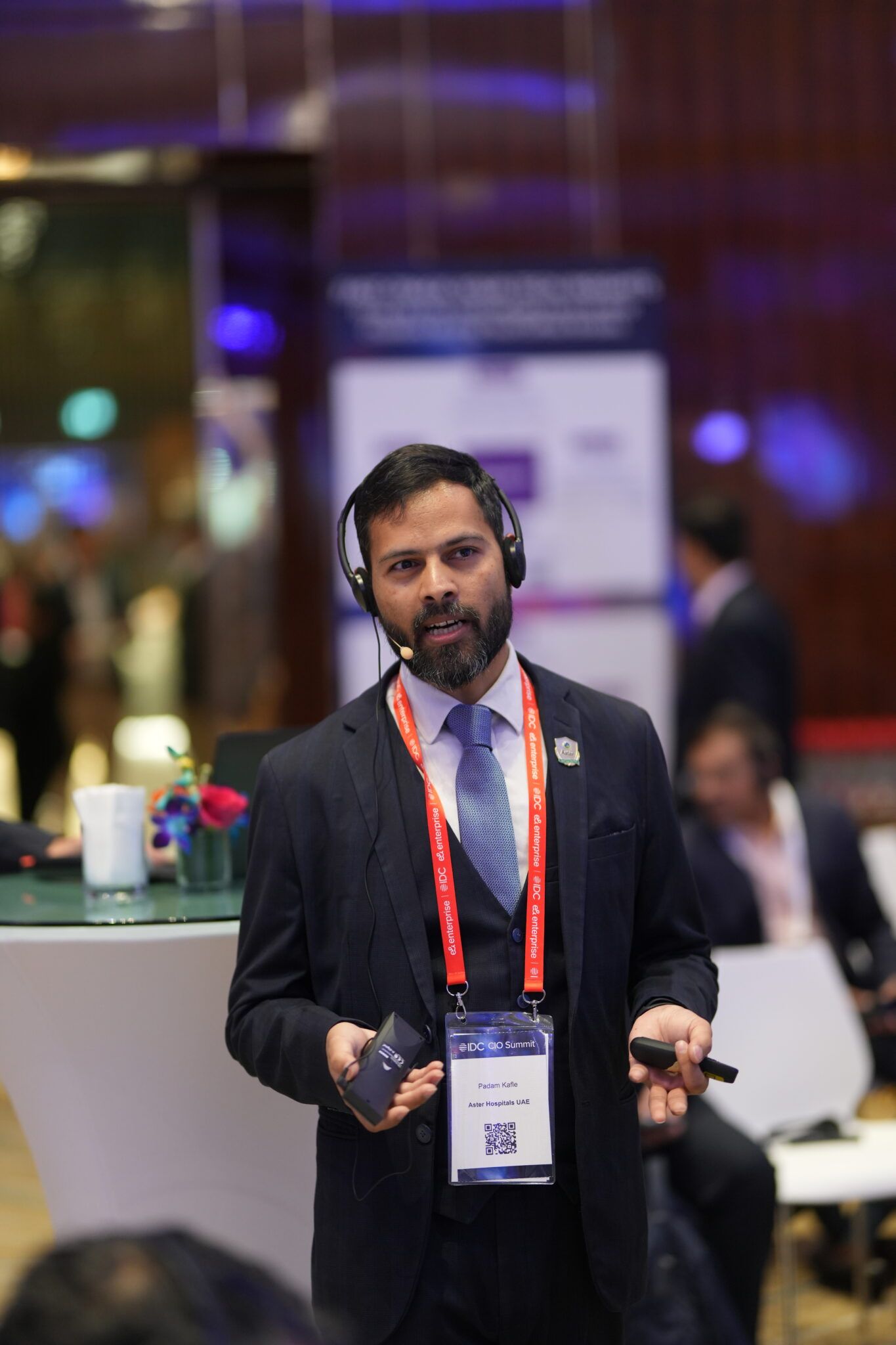Balancing AI transformation with cyber vigilance
)
Head of Information Technology and Automation at Aster Hospitals UAE, Padam Kafle, shares his thoughts on the rise in cyber risks in healthcare
Its Smart Aster Hospital V2.0 plan includes a wide range of technology applications, from wearables in medication dispensing, to mobile devices for real-time patient monitoring in the ICUs.
With Generative AI taking the world by storm, Aster is similarly keen to harness the technology’s full potential in improving care outcomes and efficiency.
|
|
So far, the hospital has leveraged Gen AI in clinical documentation and decision support, said Mr Padam Kafle, Head of Information Technology and Automation at Aster Hospitals UAE, and Head of Innovation at Aster Digital Health. Gen AI differs from traditional AI in its ability to create new forms of content, from text to images and videos. It is thus able to analyse patient data to generate real-time documentation, as well as suggest diagnostics and treatment plans for the clinicians’ reference. |
“Healthcare professionals today often have to spend a lot of time on documentation. This detracts from their main role in delivering direct patient care and patient engagement. Gen AI can help in significantly streamlining documentation, enhancing efficiency while reducing the risk of errors,” said Mr Kafle.
Gen AI has also been incorporated within the hospital’s emergency triage procedures, he added. By analysing patients’ reported symptoms and vital signs, a Gen AI-driven system is able to identify patients who requires urgent attention, such as those at higher risk of heart attack or stroke. It then alerts the emergency care clinicians to prioritise these patients.

Managing the rise in cyber risks
But it is evident that higher use of digital systems and devices lead to a larger attack surface that cyber attackers can exploit.
According to Check Point Research, healthcare organisations across the world averaged a staggering 1,463 cyberattacks per week in 2022, up 74% compared with 2021.
With extremely valuable health records in sight, cybercriminals are infiltrating healthcare organisations through phishing scams, ransomware attacks or medical devices that are insufficiently secured. A study revealed that nearly half of these breaches affect patient care, and two-thirds affect access to patient data.
The crucial need to constantly fortify cybersecurity measures and guidelines is not lost on Aster.
Mr Kafle notes that the hospital’s many digital and AI applications are built by its in-house team, with data stored in the cloud and their own data centre. The cloud service comes with security protocols that are constantly updated to mitigate evolving risks.
For him and his team, a current priority is strengthening endpoint security. This involves whitelisting of websites – so only websites deemed safe can be accessed via the hospital network – and bring-your-own-device policy for all staff.
Exploring adaptive security to tackle evolving risksHe also emphasises the importance of staff education.
“We need to constantly educate and remind our staff on cyber best practices, for example not to click on suspicious links, and proper management of the different kinds of data in the healthcare setting.”
“Remember, cyber attackers are likely smarter than us. Despite advancements in cybersecurity technologies, cyber criminals continue to find ways to overcome these technologies. It’s impossible to prevent cyberattacks, so educating your people is the best way to go.”
Lastly, he pointed to adaptive security as the way forward for cybersecurity.
Adaptive security refers to a security model that continually monitors and studies threat events in the network, such as events, behaviours, and characteristics of users, systems, and cybercriminals, and predicts cyberattacks based on observed patterns.
This allows the cybersecurity team to develop defence strategies and techniques before these threats become concrete attacks.
“Hackers and cybercriminals have hundreds of ways of attacking an organisation and they are constantly coming up with new ways,” said Mr Kafle.
With data breaches in healthcare costing an average of $10 million each, “healthcare organisations and leaders need to take cybersecurity seriously and be willing to invest time and resources into building cyber resilience”, he concluded.


 Mr Padam Kafle
Mr Padam Kafle